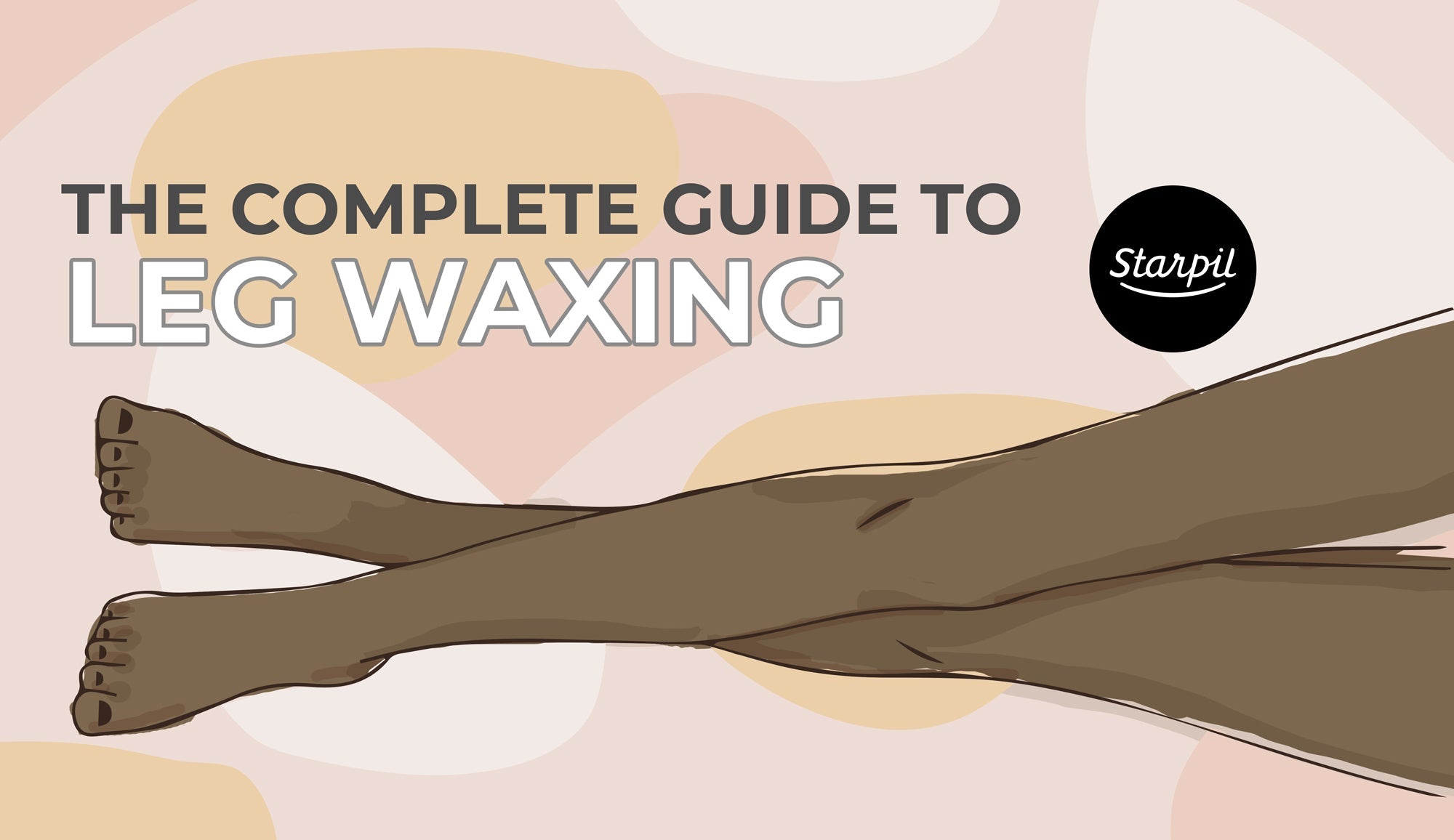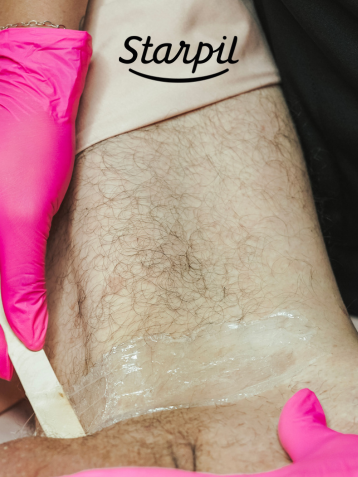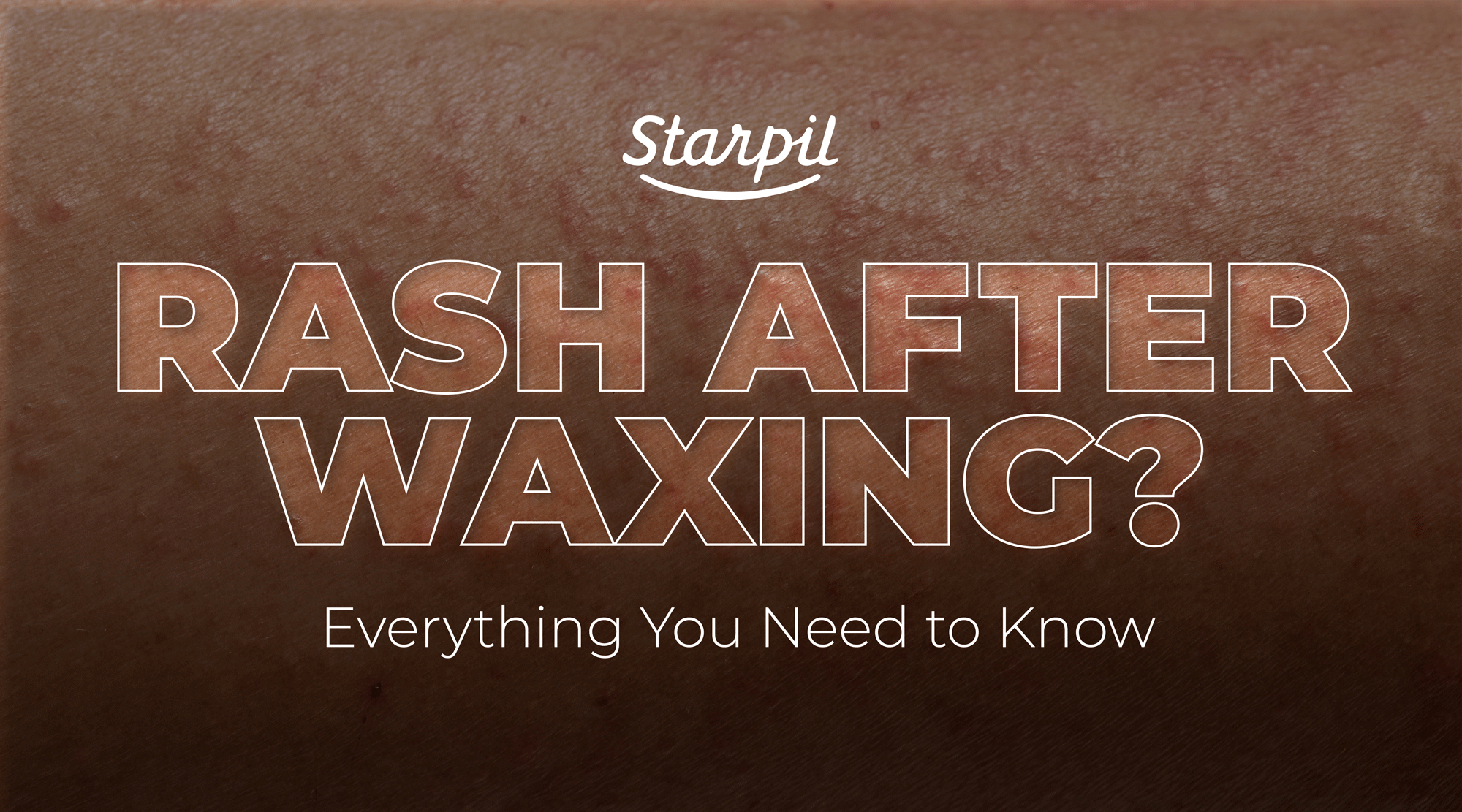Folliculitis After Waxing

If your clients develop bumps after waxing, inflammation, or just a small breakout after their services, odds are they’re going to come to you for the best professional advice regarding possible treatment and how to avoid these reactions in the first place.
Though not everyone gets irritation or inflammation after waxing, especially with the right pre and post-wax care routine in place, this can be of particular concern for those with very sensitive skin.
Table of Contents
Knowing how best to prevent and treat folliculitis, as well as what the different forms of folliculitis are will bolster your knowledge and help build your client’s trust and confidence in you and your methods. It will also help keep your clients’ skin clear and cared for - and them coming back for more!
READ: What is a Histamine Reaction After Waxing?
What is Folliculitis?
In short, folliculitis is a skin condition that occurs when the hair follicles found in the skin become inflamed. This can have multiple causative factors but is most commonly caused by a kind of bacterial infection.
Symptoms of folliculitis include itchiness, soreness, or the formation of pimples or small red bumps around hair growth. In most cases, this condition will heal on its own in a few days without any scarring. In some cases, this infection can spread or progress into sores or can lead to scarring or hair loss in severe cases.
Folliculitis Symptoms
Folliculitis symptoms include:
- Pimples or red bumps around hair follicles or areas of hair growth
- Pus-filled pimples or blisters
- Itching or burning
- Tender, sensitive, or painful
- Crusting
If your symptoms progress or stick around despite self-care for more than a week or two, you might want to see a doctor to keep things from progressing or worsening. They’ll prescribe an antibiotic or antifungal medication to take care of your other symptoms. If you notice your infection spreading at any point, go see a doctor immediately.
Types of Folliculitis
There are two types of folliculitis: superficial and deep. Superficial folliculitis refers to the irritation impacting only part of the follicle, whereas the deep type impacts the entire follicle. The following are the most common types of the condition:
- Bacterial folliculitis: The symptoms of this form of folliculitis include having itchy and pus-filled bumps, which indicate that the hair follicles have become infected with bacteria.
- Pseudomonas folliculitis: Also known as hot tub rash,
- Razor bumps: This can look like folliculitis, but its symptoms are caused by irritation or ingrown hairs instead of hair follicles getting infected. Razor bumps form from irritating the skin while shaving or shaving too close.
Though there are many more types, these are the most common and the easiest to treat.
Causes of Folliculitis
There are many different causes or risk factors for folliculitis, but the following are some of the most common and easiest to prevent.
- Clothing: Wearing clothing that isn’t breathable or that causes constant rubbing or chafing can trap heat or sweat, and cause a rash.
- Standing water: Soaking in a hot tub or public pool that isn’t properly cleaned can cause these sorts of rashes.
- Hair removal: Folliculitis can be experienced after shaving, waxing, or other hair removal methods that can irritate skin or damage hair follicles.
Knowing your risk factors or possible lifestyle choices that could lead to folliculitis is your greatest prevention tool.
READ: Why Using Pre & Post-Wax Products is a MUST!
What is Folliculitis After Waxing?
As we mentioned, folliculitis can be caused by many different hair removal methods, including waxing. Folliculitis after waxing takes the form of a bumpy, red rash akin to pimples that are caused by inflammation caused by removing hair at the root.
This reaction will usually go away on its own after a few days. If it progresses into white bumps or bumps filled with fluid after a few days, this can be indicative of an infection Don’t worry, however- this can still be treated with home remedies.
After this initial rash subsides, you might develop ingrown hairs, which are characterized by round bumps or pustules that resemble breakouts or pimples. Hair might or might not be seen beneath the bump, depending on your skin type. Though ingrown hairs are very uncomfortable and not the best on the eyes, they’re also very treatable with a variety of at-home products and are also very preventable.
READ: How to Prevent Pimples After Waxing
How to Prevent Folliculitis
As we mentioned, many of these types of folliculitis are very preventable, regardless of their causation. Specifically for those concerned about developing this condition after waxing, there are many things you can do to ensure folliculitis doesn’t occur in the first place.
Some of these prevention methods include wearing loose and breathable clothing during and after your waxing appointment, so that sweat or heat isn’t trapped with your skin. This prevents the buildup of bacteria.
One of the most important things to do to keep your skin clear is by keeping skin clean, especially before and after your waxing appointment.
Following the right pre and post-wax care routine will also save you from these breakouts or form any inflammation. Before a waxing service, apply Starpil Original Pre-Wax Gel, or Starsoft Pre-Wax Gel for those with especially sensitive skin types, to the skin to cleanse, hydrate, and create the best surface for waxing.

Following your wax, apply Starpil Original Post-Wax Lotion to moisturize and soothe skin, and to ease any inflammation. Lock in hydration with the Original Post-Wax Oil to remove residue and help ease the skin.
A go-to prevention technique for ingrown hair prevention in particular is Starpil’s Ingrown Hair Serum, which gently exfoliates the skin while dissolving dirt, bacteria, and any ingrown hairs before they form.
After waxing, you should also avoid any activity that might cause friction or swelling, including going to the gym, exercising, and even having sex. You should also avoid pools, hot tubs, or bodies of water with a fresh wax.
READ: How to Treat & Prevent Ingrown Hairs After Waxing
How to Treat Folliculitis After Waxing
If you’ve already found yourself exhibiting symptoms of folliculitis, there are also many treatment methods for the most common types. In addition to Starpil’s Ingrown Hair Serum to exfoliate and dissolve ingrowns, there are many at-home remedies you can use to get rid of this annoying irritation.
Use a warm compress to help draw out ingrown hairs. Apply the warm compress or heating pad to the affected area for around 5 minutes to gradually coax out hairs. If you’re not experiencing ingrowns, but rather just irritation or inflammation, apply a cold compress to the affected area for up to 20 minutes to soothe the skin.
One of the most important things to remember when it comes to folliculitis and its symptoms is to never pick, pop, or further irritate your rash or bumps. Not only can poking or irritating these bumps increase the risk of more bacteria getting into your skin, but it can also increase the risk of infection or scarring. You might think popping these bumps will help, but it may only hurt your skin more, or cause worsening bacteria buildup or ingrown hair cysts.
READ: Ingrown Hair Cysts: Treatments, Causes & Symptoms
Final Thoughts
Though there are many types of folliculitis and a lot of different causes, folliculitis is usually pretty easy to treat and prevent.
Especially if you’re concerned about inflammation or a rash after waxing, prevention is the key to keeping your skin clear and saving you from having to deal with irritation or unsightly bumps in the first place.
With the right pre and post-wax care routine, you’ll also set your skin up for success and will allow it to look and feel its best before your services even begin. Keeping your skin clear and saved from folliculitis, no matter how mild, will keep you comfortable and rash-free!
Folliculitis After Waxing | FAQs
What is folliculitis after waxing and what does it look like?
Folliculitis after waxing is a skin condition that occurs when hair follicles become inflamed following hair removal. It appears as a bumpy, red rash similar to pimples, caused by inflammation from removing hair at the root.
Symptoms include pimples or red bumps around hair follicles, pus-filled bumps or blisters, itching or burning sensations, tender or painful skin, and sometimes crusting. This reaction typically goes away on its own after a few days, but if it progresses to white bumps or fluid-filled bumps, it may indicate an infection.
How can I prevent folliculitis after waxing?
Prevention is key to avoiding folliculitis after waxing. Follow these steps: wear loose, breathable clothing during and after waxing to prevent heat and sweat buildup; keep skin clean before and after your appointment; use proper pre-wax care like Starpil Pre-Wax Gel to cleanse and prepare the skin; apply post-wax products like Post-Wax Lotion and Oil to soothe and moisturize; avoid activities that cause friction or sweating (gym, exercise, sex) immediately after waxing; stay away from pools, hot tubs, or bodies of water with a fresh wax; and consider using an Ingrown Hair Serum to gently exfoliate and prevent bacterial buildup.
How should I treat folliculitis if it develops after waxing?
If folliculitis develops, several treatment methods can help: use a warm compress for 5 minutes to help draw out ingrown hairs if present; apply a cold compress for up to 20 minutes to soothe inflammation and irritation; use an Ingrown Hair Serum to gently exfoliate and dissolve bacteria; keep the area clean and dry; wear loose clothing to avoid further irritation. Most importantly, never pick, pop, or further irritate the bumps, as this can increase the risk of bacterial infection, scarring, or ingrown hair cysts.
When should I see a doctor for folliculitis after waxing?
You should seek medical attention if your symptoms persist despite self-care for more than a week or two, if you notice the infection spreading to other areas, if bumps become severely painful or filled with pus, or if you develop fever or other signs of systemic infection. A doctor can prescribe antibiotic or antifungal medications if needed. If you notice your symptoms worsening rather than improving after a few days, it's better to seek professional medical advice rather than continue with home treatment alone.
What's the difference between folliculitis and regular post-wax irritation?
Folliculitis specifically involves inflammation or infection of hair follicles, presenting as pimple-like bumps that may contain pus and can be itchy, burning, or painful. Regular post-wax irritation typically appears as general redness, mild swelling, or sensitivity that subsides within 24-48 hours.
Folliculitis may also lead to ingrown hairs, which appear as round bumps or pustules that resemble breakouts. While normal post-wax irritation is temporary and mild, folliculitis involves actual inflammation of the follicles and may require specific treatment, especially if it progresses to infection.





Comments